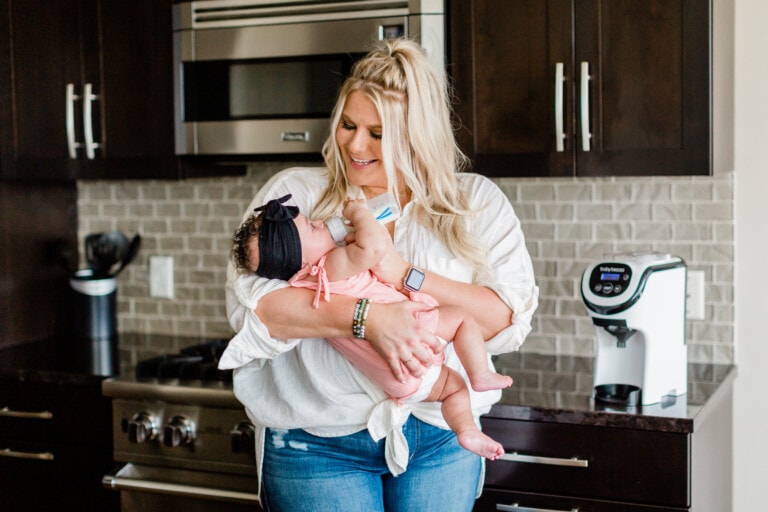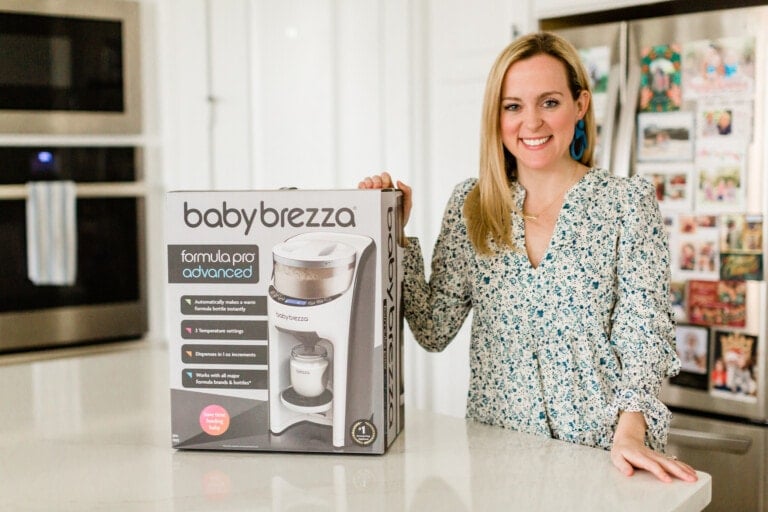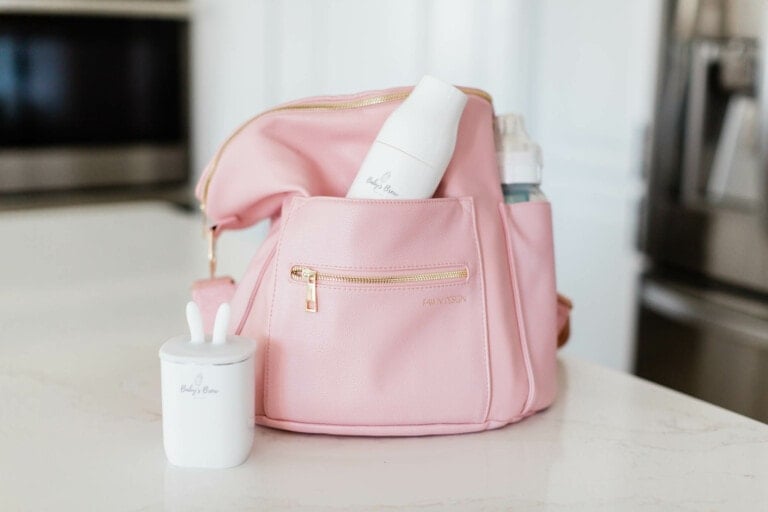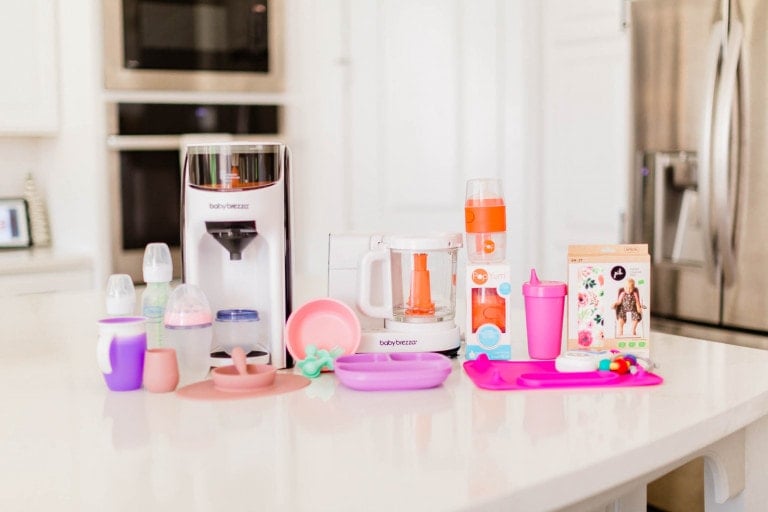Before I had my first child, I assumed that feeding would be reasonably straightforward. If you’re breastfeeding, you offer the breast. If you’re bottle-feeding, you offer the bottle. That’s how it all works out, right? The prenatal breastfeeding course I took had a heavy emphasis on the celebration of breastfeeding and that sweet, sincere nursing bond. I looked forward to feeding my baby with a glimmer in my eye as I dreamed of what a calm and beautiful journey it would be.
Then came my newborn boy with a tongue-tie, low milk supply, and severe newborn weight loss. I felt utterly lost in the foreign juggle of it all. This didn’t look like the Pinterest breastfeeding poster I’d been promised. I quickly discovered that things aren’t so black and white for many of us when we feed our babies. There’s a large spectrum in infant feeding that includes breastmilk, formula, donor milk, bottles, and nursing. And these are sometimes intermingled or independent of each other.
Transitioning back and forth from breast to bottle became a source of stress for me with my son. I remember wondering how long it might be until he preferred the bottle. Or how often I might be overfeeding/underfeeding him. It wasn’t until I learned about bottle-feeding practices that could benefit breastfeeding that I grew more confident in what I was providing my child. That same stress is frequent in bottle-feeding families. However, practicing paced bottle-feeding can reduce much of this stress.
What Is Paced Bottle-Feeding?
Paced bottle-feeding considers the feeding patterns your baby receives at the breast and mimics them with a bottle.1 A long-lived myth is that nipple confusion can rob you of breastfeeding. The truth is that babies know a rubber nipple isn’t your breast. But more often, they can develop a flow preference.2 Understanding how your body feeds and how breastmilk flows can help inform how you feed with a bottle. One of the main benefits of paced feeding is a flow and feeding technique that complements the nursing relationship and alleviates the risk of flow preference.1
When nursing a baby, your body isn’t like a faucet turned on and flowing at an even speed. When babies latch onto the breast, they suckle quickly to trigger a letdown. A letdown releases milk from the breast, allowing milk to flow. Once the milk lets down, a baby will switch to slow and wider sucks as they pull out the milk and swallow.3
This pattern of quick sucking followed by wide swallows usually happens intermittently throughout a feed. When your breastmilk flow slows, the baby responds with quick sucks to signal another letdown and encourage more milk to flow.3 Whether nursing a baby or pumping breastmilk, you may experience two to three letdowns while you pump milk or feed at the breast.
How To Do Paced Bottle-Feeding
Here are the steps you can take to practice paced bottle-feeding with your baby:
1. Position the Baby
To start, we position the baby at an upright angle. This encourages less passive feeding and helps you support their head and neck.1,4 We want babies to be active participants in their feeding. That’s more difficult to do when taking a bottle lying down. When a baby is upright with the bottle positioned more horizontally to their mouth, they have a better opportunity to practice those same sucking patterns we would see at the breast.
2. Have a Wide Gape
Feeding begins with the same practice we know is beneficial to breastfeeding. We want a wide gape and baby to latch on their own. It can help to have a bottle nipple that is more gradual in its slope, providing the baby with the opportunity to take in a deeper latch. Offer the bottle by tickling their lips or nose with the nipple. Wait for the baby to open wide before latching.4
3. Tip the Bottle Back Slightly
When you’re nursing, it usually takes a moment for your letdown to occur after the baby latches and suckles at the breast.3 You can mimic this by first tipping the bottle slightly back to prevent milk from reaching the nipple. Allow the baby to suckle for a few moments before tilting the bottle more upright and releasing the milk. Paced feeding takes patience! But it’s a practice of doing just that: pacing the feed.
4. Angle the Bottle
Throughout the feed, allow the baby to take in milk with the bottle remaining somewhat horizontal.4,5 This horizontal angle is the art to master in paced feeding. This usually means about one-half to two-thirds of the nipple is filled with milk. This angle is at the center of paced feeding — an invitation for your baby to lead in feeding.
When you’re feeding at the breast, it’s normal for your baby’s sucks to slow and quicken. To mimic nursing patterns, provide breaks to help pace the feed in the same way. You can do this by tilting the bottle back (more downward for less milk in the nipple) every few minutes to mimic how the breast stops flowing between letdowns.4
5. Switch Sides
In the same way that you would switch sides while nursing, it’s excellent to incorporate this practice into bottle feeding.1,2,5 Halfway through the feed, or if fidgeting begins, switch the baby to the opposite arm to bottle feed on your other side. This also helps encourage the baby’s mobility as they stretch both sides of the body.
If your baby is gulping in quick swallows, adjust the bottle to be more horizontal to encourage a slower milk release. When your baby begins to relax and show signs of fullness, tip the bottle back again to see if they request more or feel satisfied and are finished feeding.
Timing the Feed
If you’re replacing a nursing session with a paced feeding bottle, it should take a time similar to what you’re used to at the breast. It’s most beneficial to use a preemie or slow-flow nipple so that the volume of milk received is similar to what the body provides.6 If you’re exclusively formula feeding, feeds should take between 15 and 20 minutes and vary depending on volumes if you’re offering supplemental feeds.7
Though the techniques of paced bottle-feeding are from practices and patterns we see in nursing, these techniques can benefit all babies receiving bottles.4 Paced feeding lowers the risk of underfeeding or overfeeding because it gives your baby a better opportunity to exhibit hunger and fullness cues and more slowly digest their milk.4,5 It can also help in reducing intestinal discomfort. A baby is less vulnerable to taking in large gulps at a fast flow, resulting in taking in more air.8
Paced bottle-feeding can be the best friend of bottle feeders. And bottles don’t have to be the enemy of breastfeeding, either.

































